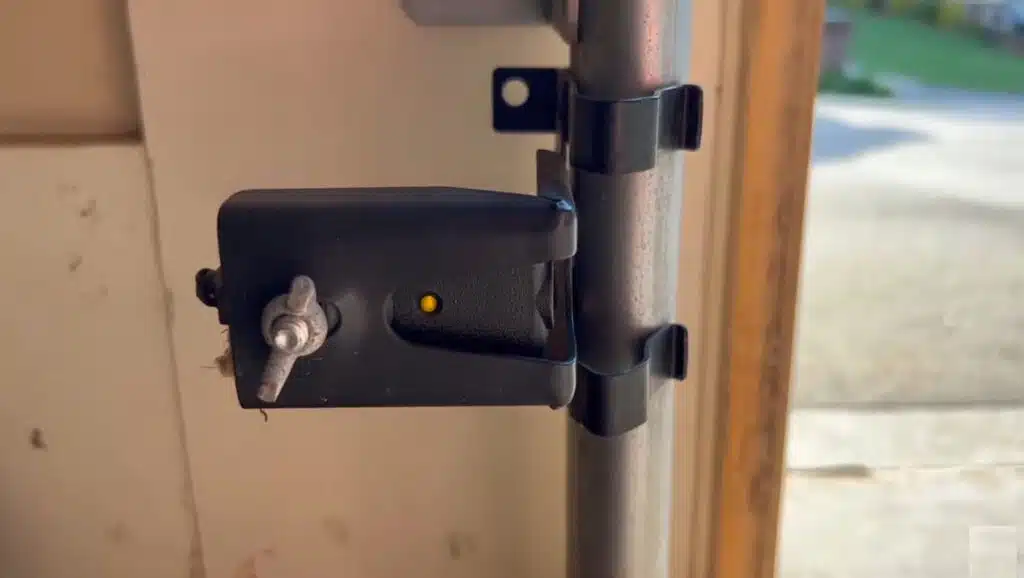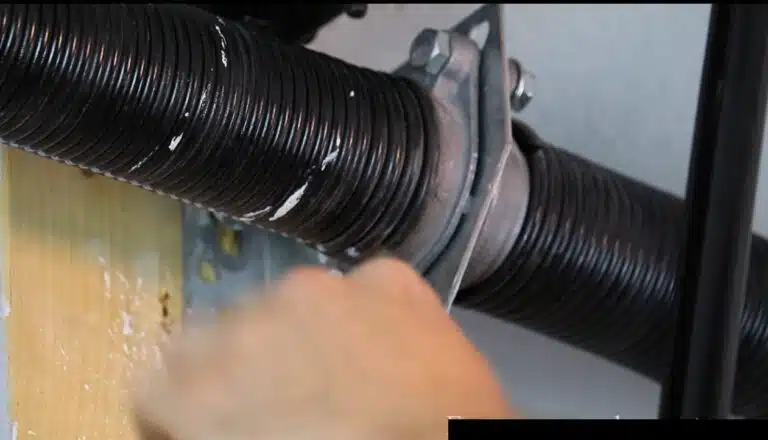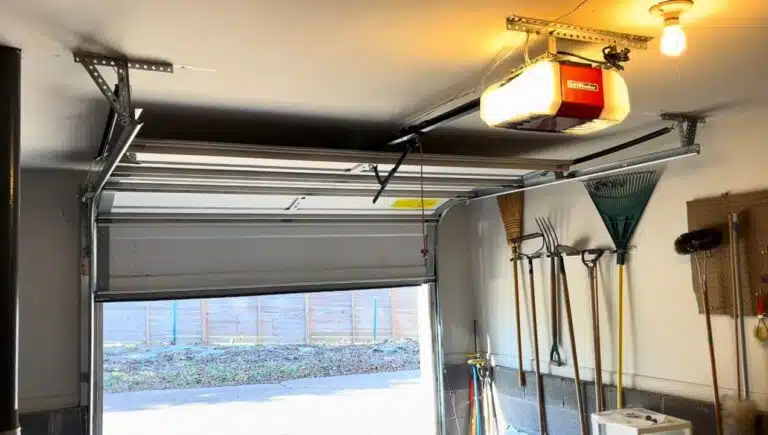Alright, you’ve got a garage door sensor flashing colors like a mini disco party, and you’re standing there wondering what it’s trying to tell ya. No worries, because we’re about to crack the color code of those tiny, blinking sensor lights.
Garage Door Sensors: The Basics
Think of your garage door sensors as tiny guards keeping an eye out. They stop the door from closing on anything that shouldn’t be there, whether it’s your car, the family pet, or anything in between. But when these sensors light up in colors you may not expect, it’s the system’s way of giving you a heads-up that something’s going on. Each color light is basically a message waiting for you to read it.
What Does a Yellow Light on a Garage Door Sensor Mean?
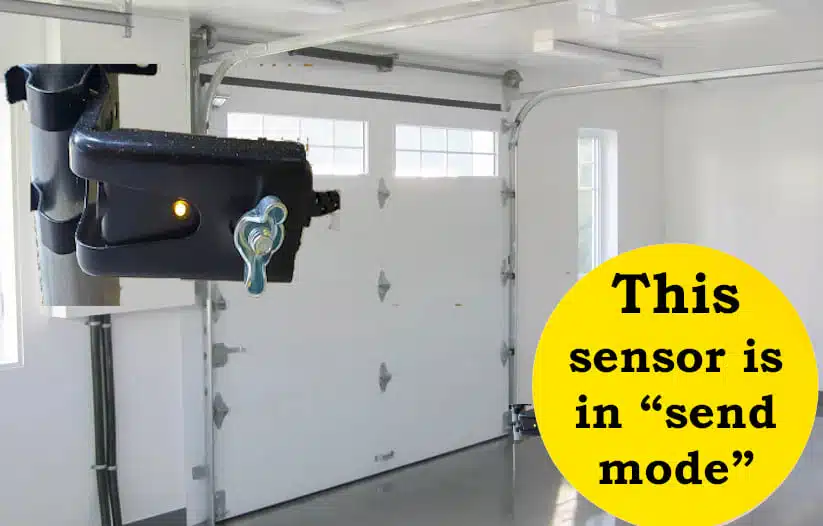
So, you notice a yellow light on one side of your garage door sensor. No need to panic; it’s usually a steady yellow light on one of the sensors, which is totally normal. It means this sensor is in “send mode,” shooting out the infrared beam. That little yellow light is simply saying, “Hey, I’m doing my job, sending the beam just fine.”
However, if you see the yellow light blinking or acting sketchy, you might have an alignment issue. Misaligned sensors can throw the whole system off balance. A quick fix might be just nudging the sensor until that light stays steady. If it keeps blinking, it might be calling for more than a little adjustment.
- Tip: The yellow light isn’t about errors; it’s about alignment and sending the beam.
What Does a Green Light on a Garage Door Sensor Mean?
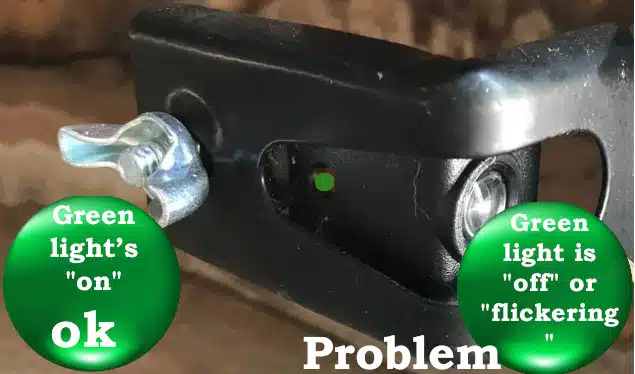
Alright, now you spot a green light. Typically, a steady green light on the sensor means the receiver is, well, receiving. This sensor is basically catching the beam sent out by the yellow light sensor. When the green light’s on, everything’s connected and ready to roll.
But if the green light is off or flickering, something’s off. It could be dirt, dust, or just a poor connection messing things up. You might need to get up close and clear away any cobwebs or grime blocking the sensor’s view. If it doesn’t work, give it a good wiggle and make sure the wire connections are tight.
- Quick Fixes for Flickering Green Lights:
- Dust off the sensors.
- Realign them gently.
- Check the wires if you’re still seeing problems.
What Does a Red Light on a Garage Door Sensor Mean?
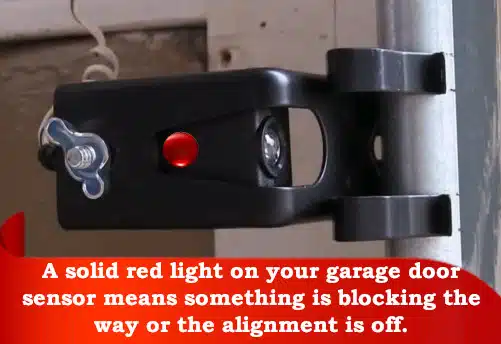
A red light on the garage door sensor usually means it’s throwing a fit because something’s blocking the path or the alignment is off. When this red light blinks or just refuses to cooperate, it’s telling you that the sensors aren’t connecting like they should.
Now, a solid red light could mean everything’s fine if it’s the receiving sensor, but in most cases, red usually screams “problem!” Here’s what you can try:
- Red Light Remedies:
- Look for any objects obstructing the sensors.
- Adjust the sensor until that red light turns off or goes steady.
- If the light’s still acting up, the wiring might be loose or damaged.
The red light means business, so don’t ignore it. It’s often the main warning that the sensors aren’t aligned, and your door might not close until you sort it out.
What Does an Orange Light on a Garage Door Sensor Mean?
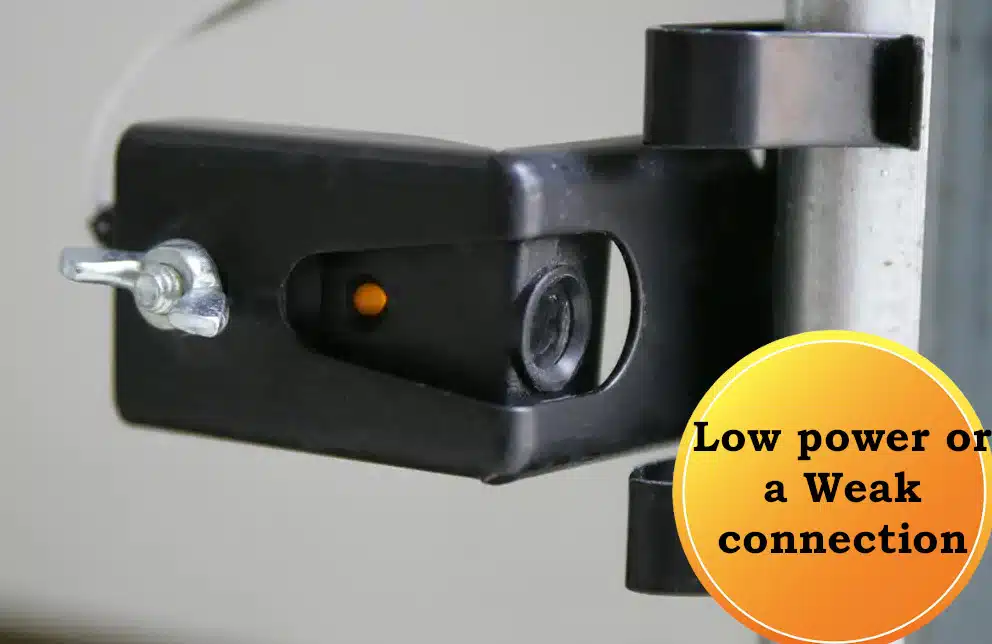
Now, this one’s a bit trickier since not all systems use an orange light. But if you see an orange or amber light, it’s often a sign of low power or a weak connection. It’s like when your phone’s at 10% battery, begging for a charge.
The orange light may show up on older models or specific brands, and it usually means there’s an issue with the sensor’s power source or the wiring. Here’s the lowdown:
- Orange Light Solutions:
- Check the power source. Is everything plugged in tight?
- Inspect the wires for wear and tear.
- Give the system a reset to see if the orange light decides to chill out.
Orange lights can be a little more rare, so don’t worry if yours doesn’t have one. It’s all about power and connections here, so make sure the power’s flowing.
A Quick Troubleshooting Checklist
If you’re seeing any of these colors and they’re blinking, flickering, or going rogue, here’s a quick rundown on what you can do to get things back in order.
- Step One: Dust those sensors. It’s wild how much a bit of dirt can mess things up.
- Step Two: Make sure the sensors are aimed at each other. They’re like two friends that need to make eye contact.
- Step Three: Double-check the wiring. Sometimes, a little wiggle on those wires can save you a lot of hassle.
- Step Four: Try a system reset. Unplug the garage door opener, wait a few seconds, and plug it back in.
A Few More Tips and Tricks
- Remember to Keep Things Clean: Dust, spider webs, and all sorts of grime can get in the way. Wipe down the sensors every once in a while, and you might avoid those random blinking lights altogether.
- Don’t Forget About Power: Sometimes the problem isn’t the sensors at all but a power issue. Make sure everything’s connected and that there’s no damage to the power source.
- Be Gentle with Adjustments: Those sensors are sensitive! A slight nudge can do the trick, but don’t go too hard on them, or you might end up causing more issues.
The Bottom Line on Garage Door Sensor Lights
Each color on your garage door sensor is basically its own little code, and understanding them can save you a ton of frustration. Whether it’s a solid yellow showing everything’s lined up, a flickering green indicating a dust problem, a red warning you of alignment issues, or an orange telling you there’s low power, these lights are all messages from your sensors. By paying attention to them, you’re already one step closer to mastering your garage door.
In a Nutshell
- Yellow Light: Sending the beam – alignment’s all good
- Green Light: Receiving the beam – clean it up if flickering
- Red Light: Problem alert – probably alignment or obstruction
- Orange Light: Low power – check your wiring or power source
So next time your garage door sensors start lighting up, you’ll know exactly what’s up. No more guesswork – just a few easy fixes to keep things running smoothly. Happy troubleshooting!

